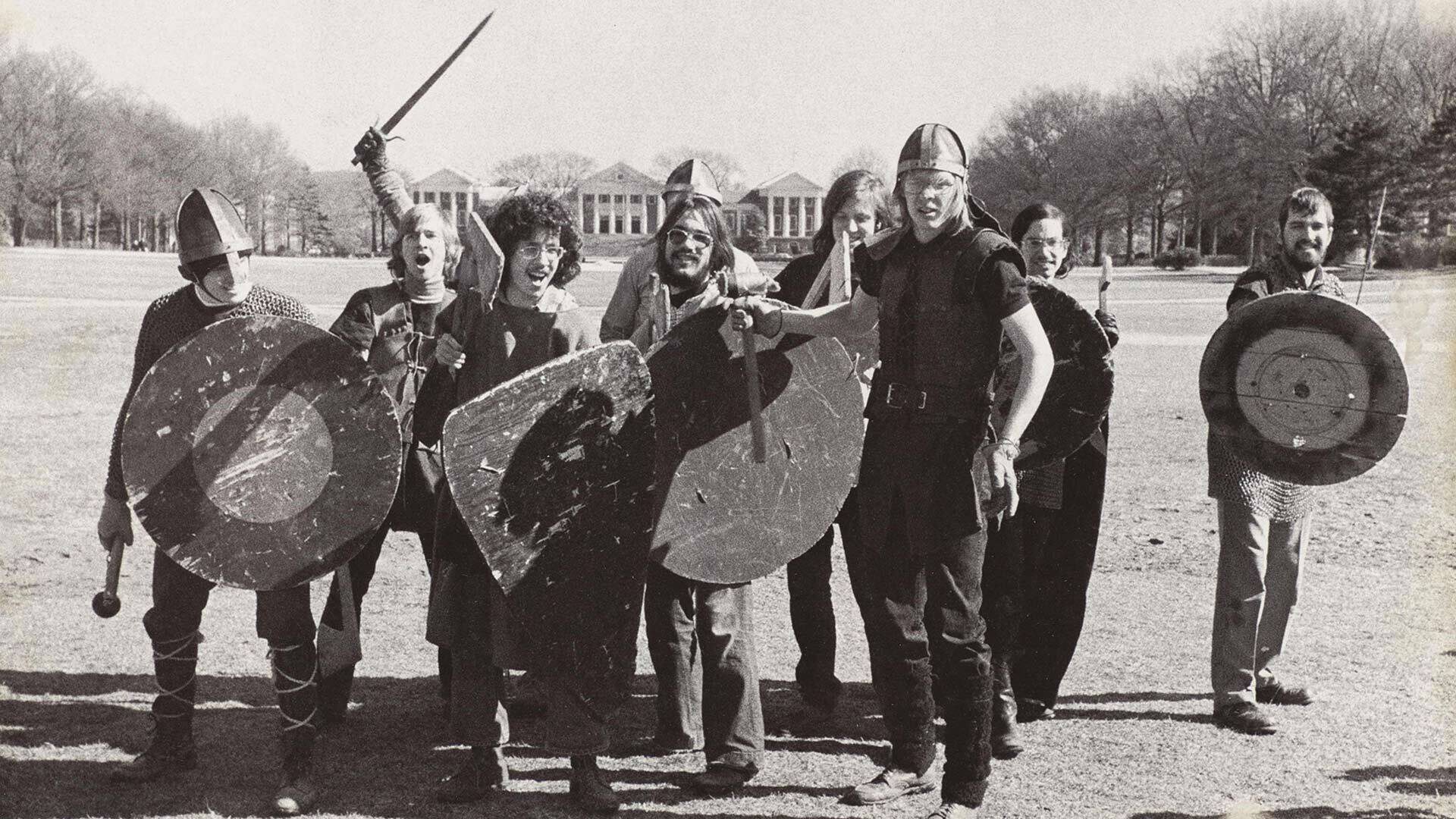- May 03, 2024
- By Sala Levin ’10
Charging across the hilly terrain, swords raised, shields gripped against their chests, the Normans and the Anglo-Saxons faced off, their bodies protected only by chain mail cobbled together from … wire clothes hangers. Just beyond the grassy battlefield, students strolled by on their way to class.
This was the fall of 1969, when a group of Terps marked the 903rd anniversary of the Battle of Hastings with a re-enactment on South Chapel Lawn. It was the fitting official launch of a new group on the University of Maryland campus called the Maryland Medieval Mercenary Militia (MMMM), in which members gave themselves archaic names, learned English country dances and meticulously studied the military strategies of the Middle Ages so that they could recreate historical battles for kicks.
“Nowadays, re-enactment is a big thing. Back then, it was Confederates, Union, Revolutionary War and that’s it,” said Bruce Blackistone ’72, one of the founders of the group. “This was way off-center for the average re-enactment group.”
Blackistone developed a pointed interest in medieval life during high school, when he built a crossbow and founded an archery club “known as the Sagittarians, just to be all classy about it,” he said. At the University of Maryland, he joined the Fencing Club, where he and his sword-wielding friends began dreaming of something “a little flashier and more substantial than foil, epee and saber,” he said. “Trust me, a fencing saber is nothing like a cavalry saber.”
(Ceecy Nucker ’72, a co-founder of MMMM, remembers it slightly differently: “We didn’t quite get thrown out of the Fencing Club, but they weren’t happy with us. We tended to do things like fence up and down the stairs in Cole Field House.”)
One summer night, sated with period-correct mead and sitting around a post-party bonfire, Blackistone suggested to buddies that they ought to re-create the Battle of Hastings, regarded as the most famous clash in English history. Also sated with mead, they agreed.
Soon, they were out on the steps in front of McKeldin Library, recruiting fellow Terps ahead of the Oct. 14 anniversary. After some discussion, they’d agreed on Maryland Medieval Mercenary Militia as the name, though some suggested dropping the “medieval” as the name was getting unwieldy. Ultimately, they decided the political context of the late ’60s demanded its inclusion. “People were rioting on campus, my future wife was being tear gassed as she walked back to her dorm,” said Blackistone. “‘Mercenary militia’ sounded a little too ominous.”
Nucker, self-appointed chief wench of MMMM, suggested the South Chapel Lawn as a location, noting that its slopes were a decent stand-in for the site where William the Conqueror defeated the English to remake Britain.
Blackistone, who by then was the self-designated first warlord, hoped to have a dozen soldiers on each side of the battle, but in the end, it was a six-on-seven fight. (Blackistone came down with a 104-degree fever the night before and had to stay home.) They carried shields made from lids of peach baskets and wore hand-sewn tunics. Nucker also threw on a sheepskin leather jacket borrowed from her mother.
After the Battle of Hastings’ re-enactment, the group grew, doing swordplay demonstrations on campus and branching out to recreating medieval life more broadly with feasts and dances. They began gathering in a small space under the steps of Francis Scott Key Hall, though they’d often “spill out onto the front or back lawns and womp on each other’s shields a bit,” said Blackistone.
Like any warring faction, the group developed rivals. A few years after MMMM’s founding, a chapter of the Society for Creative Anachronisms (SCA), which started in Berkeley, Calif., in 1966, popped up in the area. “They were high medieval upper class, and we were low medieval lower class,” said Blackistone. “Everyone who belonged (to SCA) was some kind of nobility. We had very little nobility, and a lot of Vikings and peasants and riffraff.”
Eventually, MMMM moved to Reckord Armory, where it stayed for decades. “Stumbling upon a gathering of the mercenaries in the Reckord Armory’s basement each Tuesday evening is like entering Monty Python’s Holy Grail, only a little more peculiar,” reported The Diamondback in 1997. “Sewing cloaks, hammering armor and building shields are a few of the tamer activities, while the stronger-willed don Mortal-Kombat-meets-King-Arthur costumes as they shoot at targets plastered to trash bins and swing padded swords.”
“I can’t imagine the university allowing that practice anymore,” said Nikki Privé ’99, who was the club’s warlord (president) as an undergraduate. “I don’t think they knew what was going on down there.”
As more of the club’s members graduated, an offshoot formed: Markland Medieval Mercenary Militia, which eventually ballooned to some 600 members across the mid-Atlantic. Just as Privé graduated, the university moved the club to a smaller office in a distant corner of campus. These two events, Privé speculated, led to a dwindling of the club’s presence on campus. Sometime in the years following the office move, MMMM died a quiet death at UMD.
For some, though, MMMM was just the beginning of a lifelong madness for the medieval. Nucker and Blackistone still sail Viking ships together through the Longship Company, a nonprofit organization inspired by the vessel they converted out of a Navy Motor Whaleboat in a parking lot behind the North Campus residence halls during their college years. Now, they take the public out on their 39-foot, 12-oarred Sae Hrafn (“sea raven” in Norse) to teach guests about Viking seafaring. (They’ve also commissioned two other boats, the tall ship Fyrdaca, or “fire drake,” and the smaller Gyrfalcon, named after a type of Arctic falcon.)
“In (MMMM), you could use your intelligence on learning about the past, about Viking ships, about life, about weaving, about everything,” said Nucker. “Whatever your particular bent was, you could give it free rein in this group. So yes, it was history, but it didn’t really feel like history.”
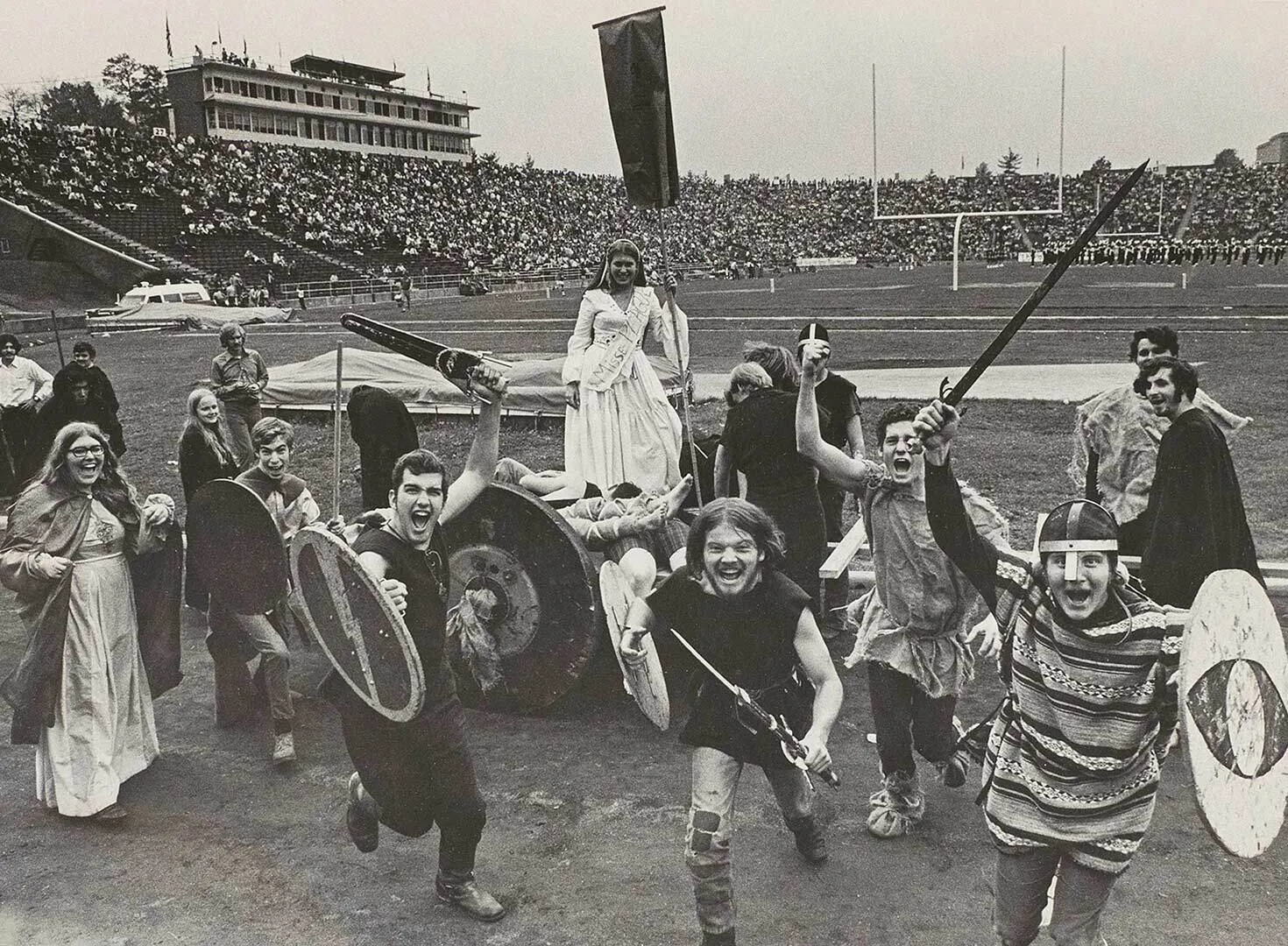
The MMMM's Homecoming float came in fourth place in 1971.
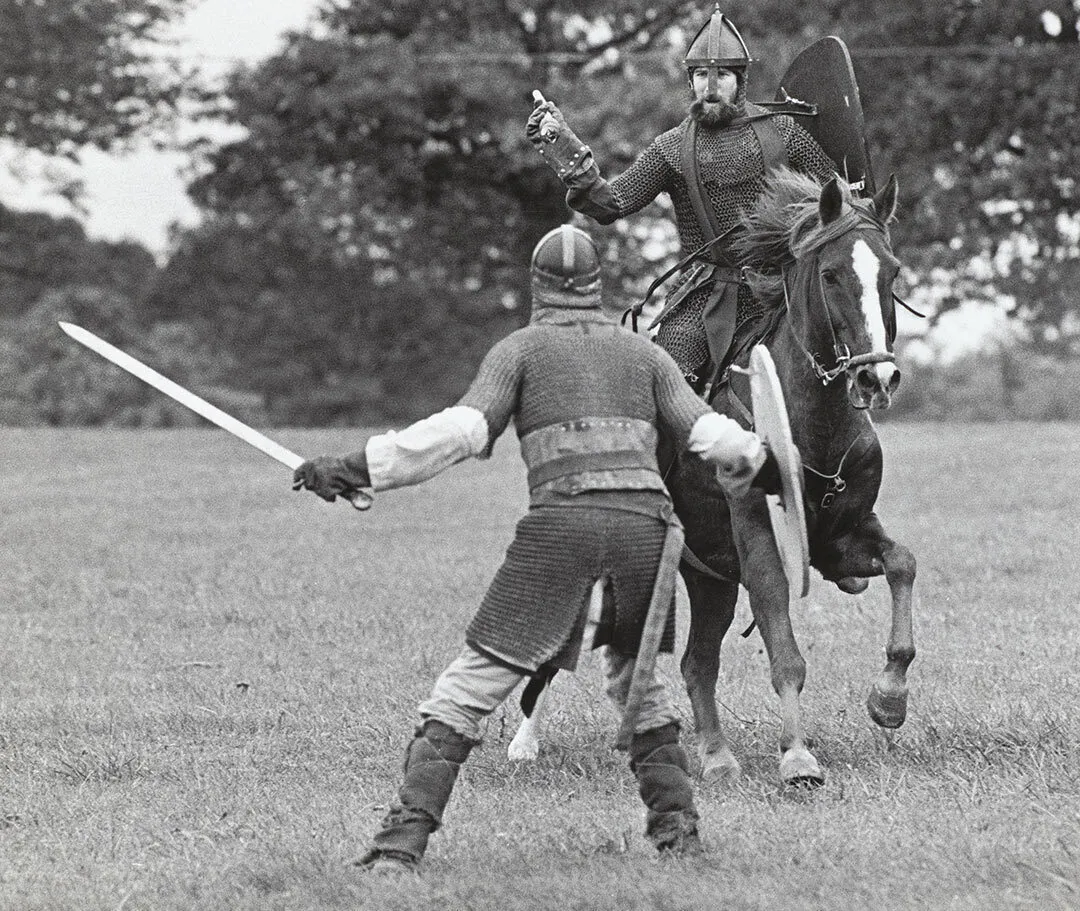
Two members of the MMMM took part in the re-enactment of the Battle of Hastings in 1985.
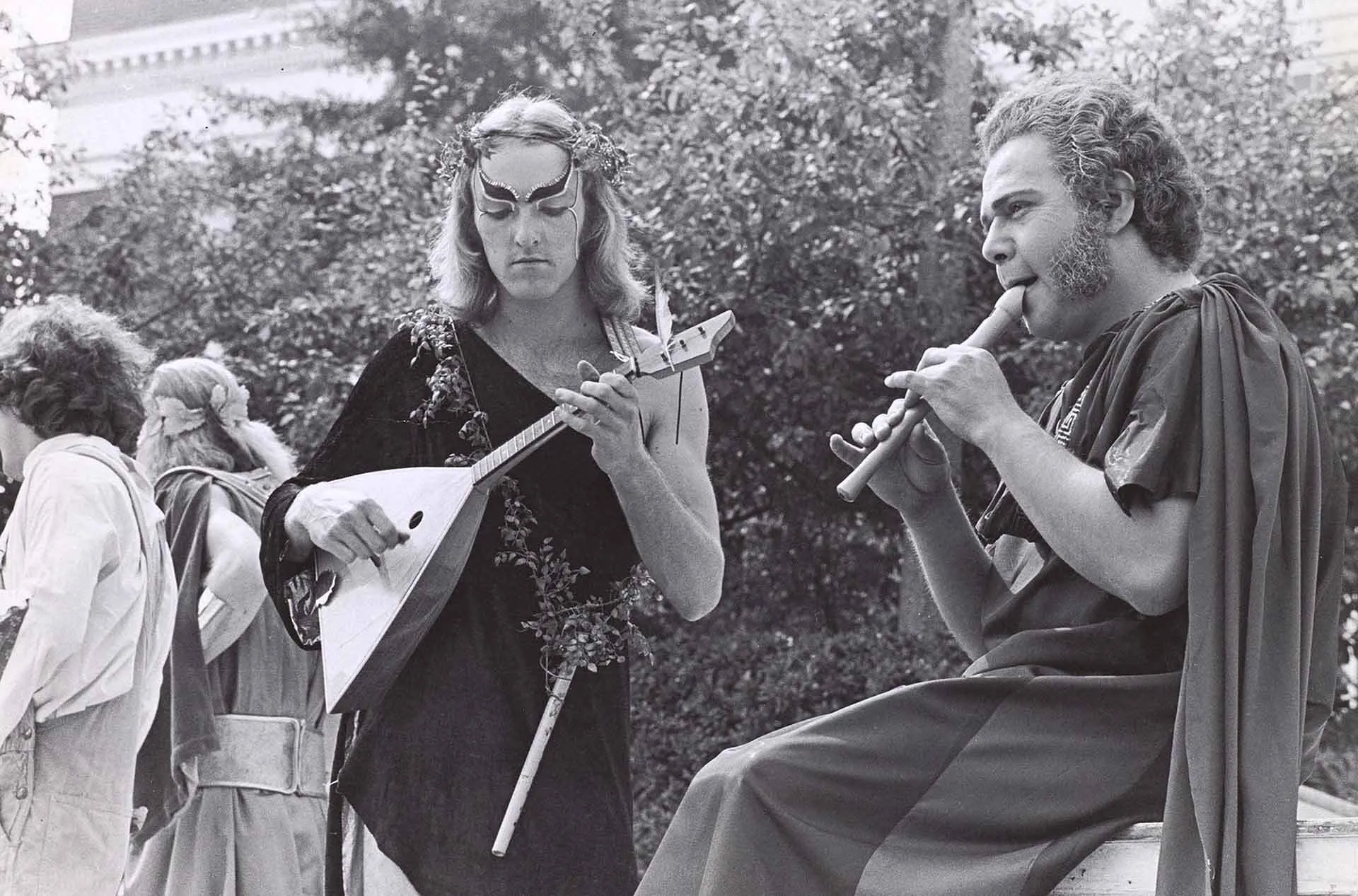
Two students played medieval-style instruments for the 1972 Midsummer festival.
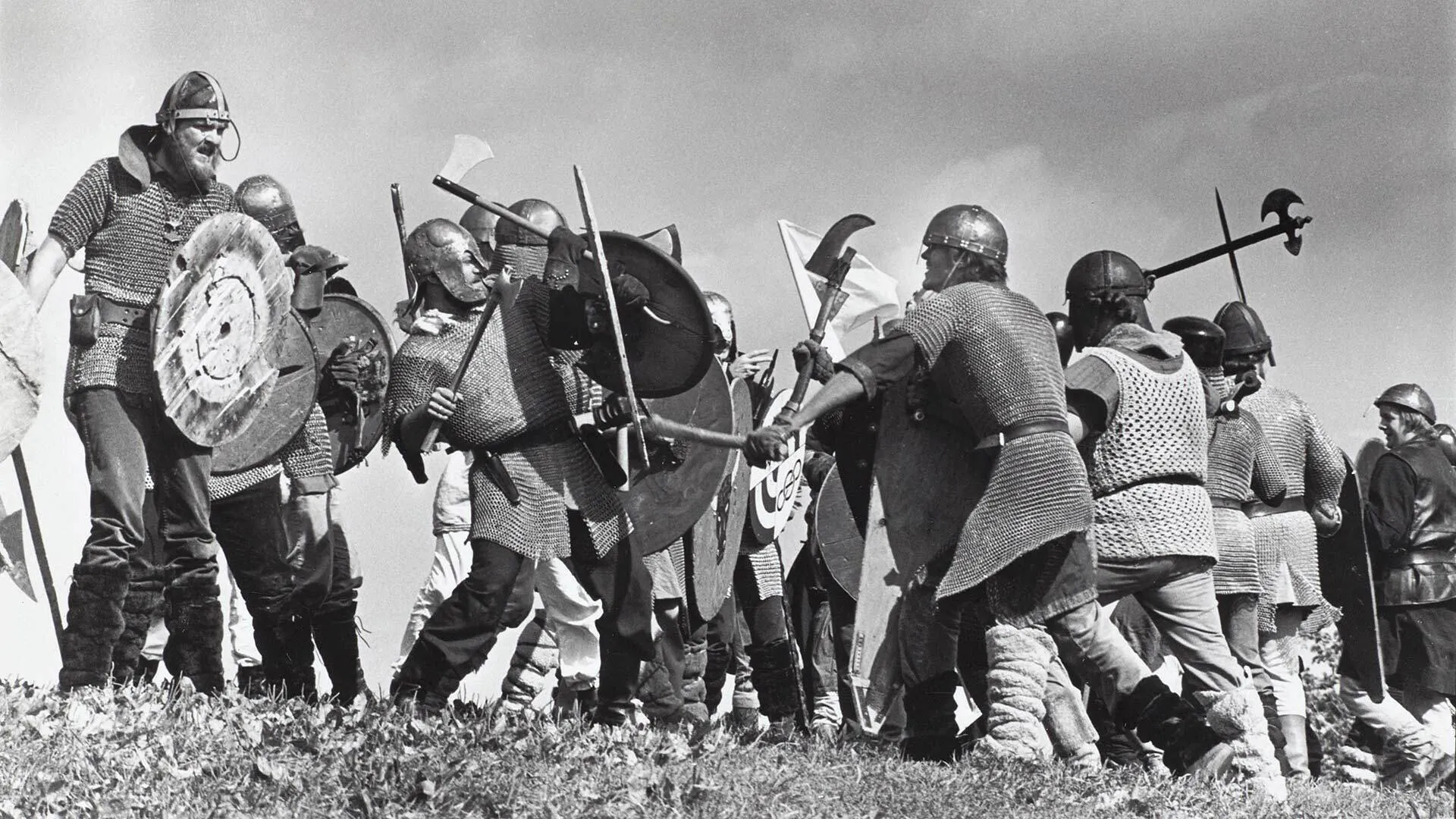
Students clashed during the 1979 re-enactment of the Battle of Hastings.
This story is part of the “Whatever Happened to …” series, which scopes out the histories and fates of aspects of the UMD campus and experience that no longer exist. Have an idea for a future subject? Email writer Sala Levin at snlevin@umd.edu.
Topics
Campus & Community